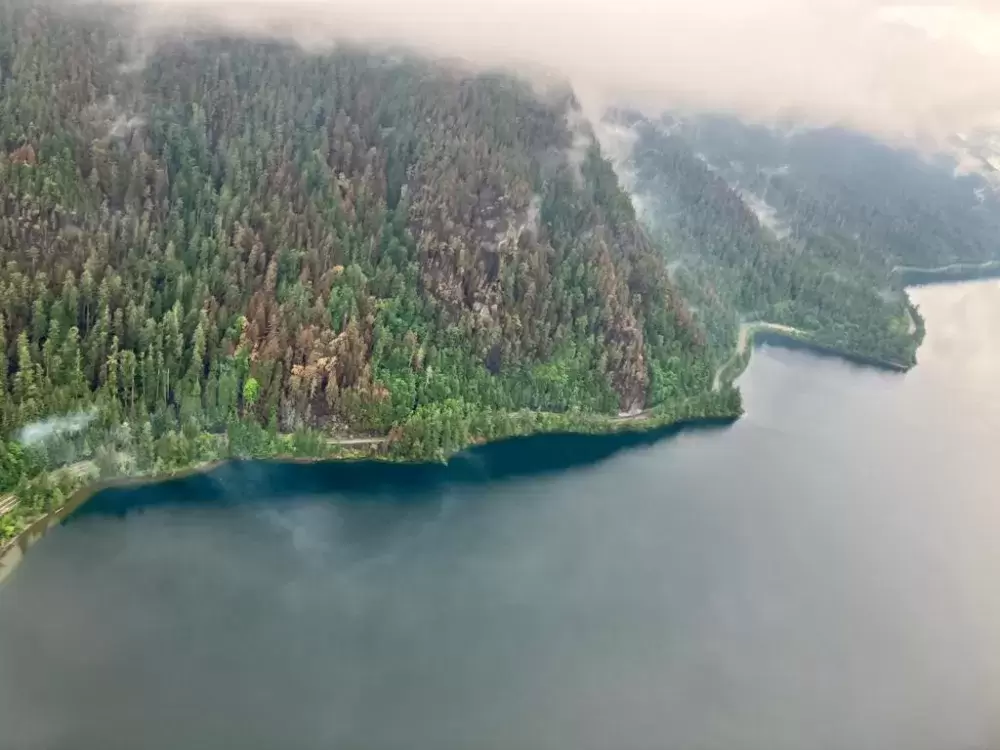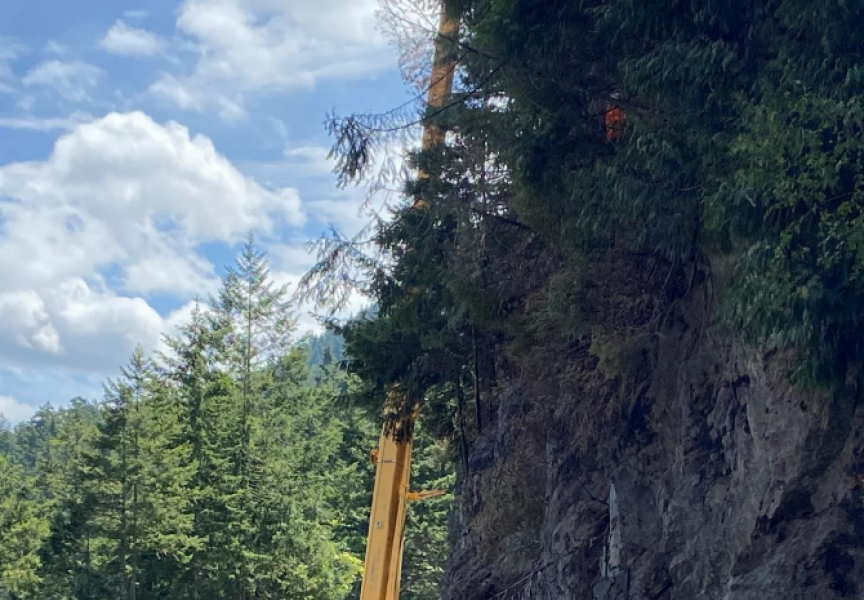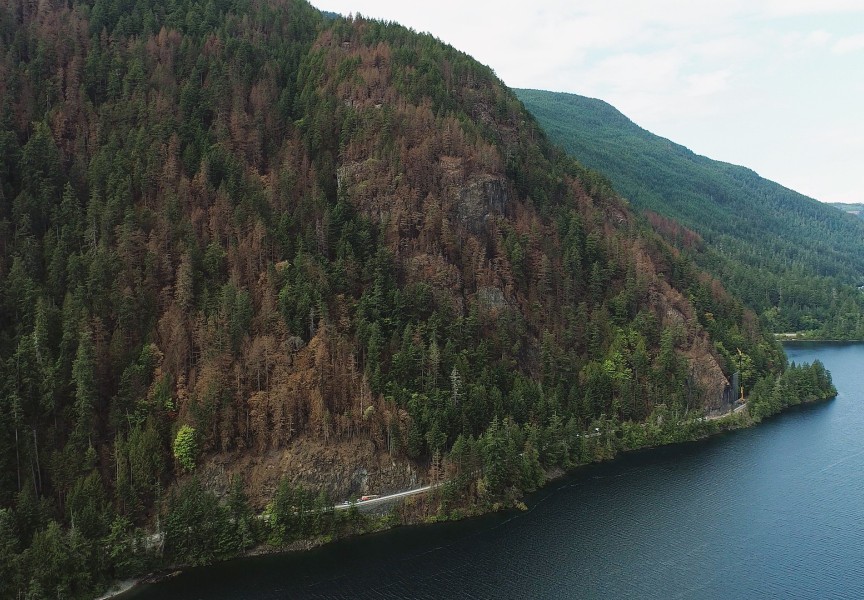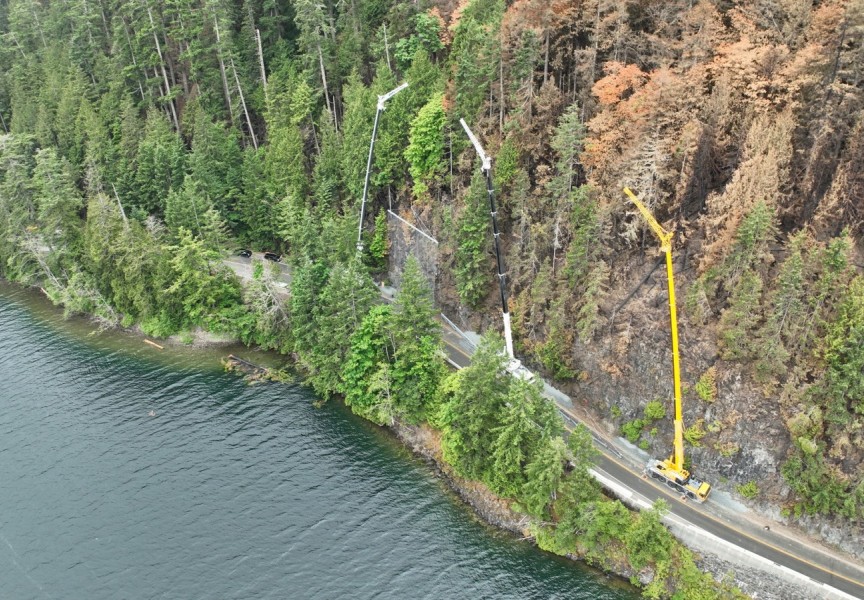As thousands west of Cameron Lake eagerly await when Highway 4 will reopen, the B.C. Wildfire Service is being “cautiously optimistic” about its efforts to contain the Cameron Bluffs wildfire after a weekend of some rain.
Since it was discovered on June 3, the forest fire burning next to Cameron Lake has grown to 254 hectares, according to an update issued on Monday by the B.C. Wildfire Service. Although this is more that the 208-hectare estimate issued on Friday, the Wildfire Service now has a clearer idea of the fire’s size due to a decrease in smoke.
A drop in temperatures on Friday and Saturday with some rain helped the situation, although a change in wind patterns could still reignite existing hot spots.
“Over the weekend there was a decrease in fire behaviour, however there is a ridge building which will result in an increase in temperature and lowering the relative humidity along with gusts of winds,” stated the Wildfire Service in its Monday update.
Cameron Bluffs is still listed as being “out of control”, despite rain over the weekend.
“It temporarily slowed everything down, but you still have all of your hot spots, and that’s what the crews are working on right now,” said Noelle Kekula, an information officer with the Coastal Fire Centre. “If those winds pick up, late night with some of those hot spots, we could be back to square one.”
Highway 4 is the main land route in and out of Port Alberni and Vancouver Island communities to its west. But since Tuesday, June 6 this critical passage has been closed, as the Cameron Bluffs fire burns along the side of the road. In some cases the fire is burning on both sides of the highway next to Cameron Lake, while crews deal with steep, mountain side terrain with “unstable rock slopes above Highway 4”, according to the Wildfire Service.
The most recent map of the fire’s spread shows it stretching for over a kilometer along the highway, extending nearly a third the length of Cameron Lake.
“Due to the fire, some tree roots have been compromised and are falling onto Highway 4,” stated the update from the agency.
Currently 76 firefighters are attacking the blaze, with the support of four helicopters dropping water into inaccessible areas, as well as 10 pieces the heavy equipment that are being used to establish containment lines along the perimeter to prevent the forest fire from growing.
Kekula describes the tactic of building a containment line around the fire, where exposed soil is free of fuel for the fire to burn.
“We are trying to build a doughnut around the fire, so it’s big enough around it that, if the wind does pick up and the fire decides it wants to reactivate itself from those hot spots, then it just burns into the donut,” she said.
Much of the forest fire is in a provincial park, within a few kilometers of the massive old growth trees in Cathedral Grove that visitors flock to each year. Some old growth trees near the highway are being cut when this is necessary to control the fire and protect the highway.
“We’re not going to just cut trees because we can,” said Kekula. “We’re cutting trees that are burning or threatening the highway.”
Now firefighters are hoping for rain in the days ahead to further mitigate the situation. Currently a drop in temperature and a decent chance of rain is forecasted for Friday and the weekend.
“We are cautiously optimistic,” said Kekula. “If the rain comes like the forecast is saying, it puts us in a better spot.”










